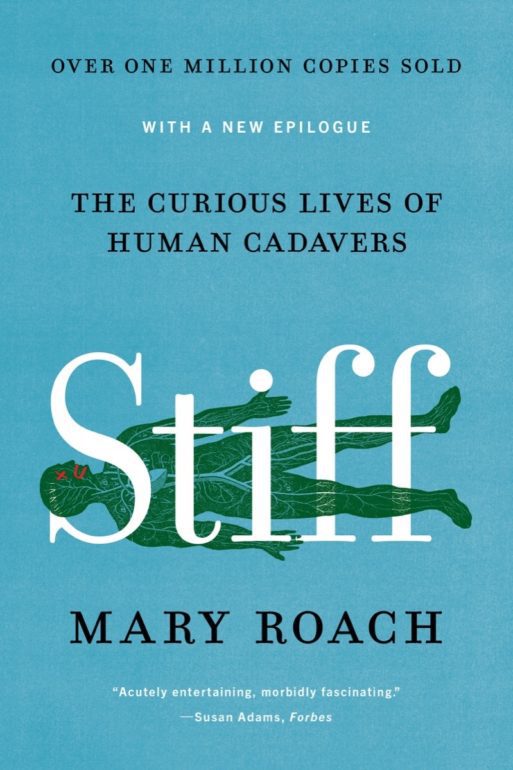 Mary Roach’s “Stiff” is by no means a book that was meant for the masses to enjoy. The incredible detail with which the author documents the important work that corpses have done in the name of science is intensely morbid. And coupled with Roach’s snarky humor, it can make the book a veritably bitter pill for some to swallow.
Mary Roach’s “Stiff” is by no means a book that was meant for the masses to enjoy. The incredible detail with which the author documents the important work that corpses have done in the name of science is intensely morbid. And coupled with Roach’s snarky humor, it can make the book a veritably bitter pill for some to swallow.
At times, however, it does take on a tone of singularly beautiful hopefulness. Roach’s blend of humor, explicit detail and introspection are pieced together throughout the book to offer up a new understanding of how to confront and cope with death. Although “Stiff” is nearly 11 years old, to this day it is an excellent starting point for curious individuals who are interested in learning about what happens to our bodies after we die. What’s more, it shows how we can embark on a particularly useful posthumous career of helping the living in a scientific life after death.
Roach’s journey of discovery takes readers near and far to gross anatomy labs, the infamous “Body Farm” at the University of Tennessee and many other locations throughout the country to interview generous doctors, analysts and other people who work in medicine or deal with death, the dying and the dead on a regular basis.
The first chapter sets the tone as Roach sits in on a special memorial service that is held for students of the University of California, San Francisco, Medical School, who have worked with and studied human cadavers in their doctoral training. Here we learn the truth that many organ donors may end up on the table as teaching tools to be used for anything from anatomy lessons to plastic surgery practice.
Roach writes that “Gross anatomy lab is not just about learning anatomy. It is about confronting death”(56). In many ways this is the underlying conclusion of her interviews with the extraordinary people who must work with cadavers as a means of testing the physical limits of the human body.
In fact, the practice of dissection is a common theme throughout the book. Later on, her interviewees admit to a range of coping mechanisms. Some seek to personalize their cadaverous companions while others prefer to “focus on the parts, not the person” (116). Herein lies the beauty of “Stiff”: the confrontation that these subjects face as they analyze the dead for altruistic purposes shows us that there is no wrong way to come to terms with mortality.
The book itself is written from a purely scientific perspective, but in later chapters Roach blurs the line between science and spirituality when she (albeit cynically) recounts the research findings of scientists who utilized cadavers in an attempt to verify theological mysteries such as the blood stains on the shroud of Turin, or the measurements of the precise weight and location of the human soul. Like the other questions in this book, these topics are detailed graphically and scientifically, with a small dose of humor added in for good measure. While these explanations may not help some come to terms with death, the scientific compartmentalization of the processes that Roach explores throughout her work may be a different way to help individuals experience their relationship with death in a new way.
Related SevenPonds articles:
- Terminally Ill Art Buchwald Plans His Funeral to Say Goodbye to Every Celebrity of His Era
- Book Review: “A Grief Observed” by C.S. Lewis
- Book Review: “Erasing Death” by Sam Parnia Explains How MDs Bring People Back to Life

 “Stiff: The Curious Lives of Human Cadavers” by Mary Roach
“Stiff: The Curious Lives of Human Cadavers” by Mary Roach



 Passing of Beloved Comedian Births a New Comedy Festival
Passing of Beloved Comedian Births a New Comedy Festival

 The Spiritual Symbolism of Cardinals
The Spiritual Symbolism of Cardinals















Spot on with this write-up, I really think this site needs
much more attention. I’ll probably be back again to read
more, thanks for the info!
Report this comment